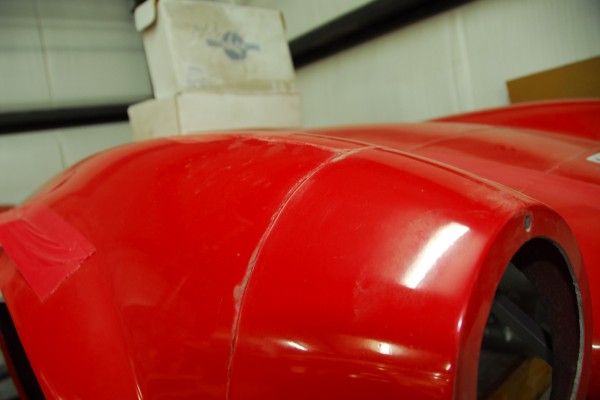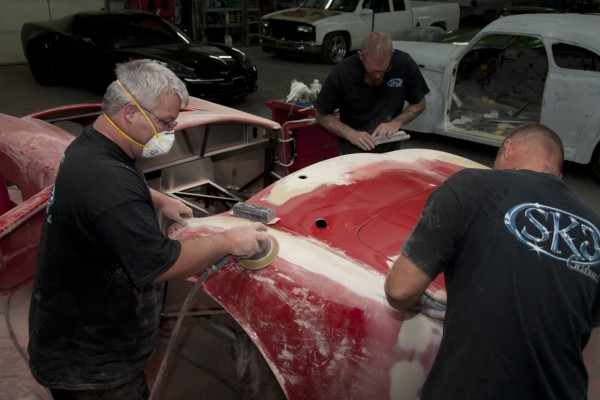In part three of our Factory Five Mk4 Roadster build, we covered assembly of the 427-cubic-inch 351 Windsor and installation of the drivetrain. Now we direct your attention to prepping the Mk4’s shapely fiberglass body for paint.
Body shops and car builders agree that when it comes to painting, it’s all about the prep work. Skimp on the foundation and no amount of paint will correct any imperfections. You have to make the extra effort to do things right—take your time with sanding, blocking, and filling.
On the Summit Racing Mk4, builder SKJ Customs sanded the body several times and used three different types of fillers and coatings (supplied by Summit Racing) plus three coats of primer to get premium-grade results. During the prep process, SKJ installed and aligned the hood, doors, and trunk lid, then test-fitted all of the exterior trim and hardware.
Why fit the trim before painting is done? “There’s nothing worse than taking a file or drill to a brand-new paint job,” Factory Five’s Nate Smith said. “It’s a nightmare if you mess it up.”
He speaks from experience, having attempted this shortcut once with, er, less than optimum results. That’s why SKJ Customs fits trim during the “putty phase” (application of filler) so any adjustments can be made then.
The first stage of the prep process starts with removing the parting lines (ridges of excess gelcoat left over from the molding process) with 80-grit sandpaper on a DA sander. Plyo Grip, an epoxy-based filler, is then applied. This is sanded with increasingly higher grades of sandpaper (as fine as 800-grit) to smooth the surface.
Once the filler is sanded U-POL 0714 Dolphin Glaze is applied to fill pinholes. This step is followed by more sanding and an application of epoxy sealer. While the sealer is still drying, SKJ applies three coats of primer. A final spray of a dark “guide coat” reveals any dips or imperfections, which are removed by wet sanding. Only when the body is as smooth as a baby’s behind is it ready for the color coat and clear coat.
Follow along as SKJ Customs gets our Factory Five Mk4 body ready for paint–scroll through the slideshow above.
More Factory Five/Summit Racing Mk4 Stories:
Factory Five Racing Kit Components
Summit Racing/Factory Five Mk4 Kits
Mk4 Build (Part 1): Front Suspension and Steering
Mk4 Build (Part 2): Rear Suspension
Mk4 Build (Part 3): Engine and Drivetrain
















Comments